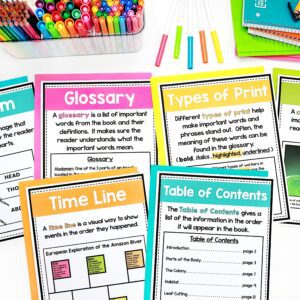
Let me start by stating that this post is not putting down ANY forms of classroom management! I write this assuming that EVERY teacher does what works best for them and their students. We come to this profession because we want to ignite a love of learning and help children discover their potential. When you have that as your primary goal (and I know you do!), the rest is… well, the REST!
I simply want to share my perspective that has come from my years of teaching in an inclusion classroom, and my personal experiences as a struggling student (a whole different blog post- or series!)
Now, let’s get to talking about this marble jar! Isn’t it pretty? My kids think so too!
Call me old fashioned, but I do not reward students for expected behavior.
- If the direction is to “Line Up Quietly,” you are expected to do it.
- If you remain focused during math centers and finish your work, that’s great! That’s what you were expected to do!
- You explained the directions to your friend who was absent yesterday? Thank you for being a kind friend. That’s what’s expected of students in this community!
That’s not to say that I don’t acknowledge their efforts and hard work! Oh no! Specific praise is a good friend of mine, and I enjoy pointing out what students are doing well. I know some behavior experts will say that’s a reward, and positive reinforcement. Yes it is, but it’s not done publicly, and does not involve anything other than those honest words. This is where I am trying to draw the distinction.
Please don’t get me wrong! I do not have a magical classroom where every child does everything right all the time! WE ARE TALKING ABOUT HUMANS, NOT ROBOTS! (and little humans no less!) Things go wrong all day, just like every classroom. It’s just that I choose to not reward my students for doing the right thing. It’s what’s expected.That doesn’t mean that I’m a bland, dreary teacher who is opposed to celebrating! On the contrary! I feel that by not celebrating when we meet expectations, we can place our focus on when students exceed expectations, and encourage them to do it often!
If you look closely at my marble jar label, it says “BRAVERY and SMART THINKING!”
These are the two things in my classroom that will earn students an external reward (in our case, a marble in the marble jar.) You may be asking yourself, ‘Bravery and smart thinking? What does that look like in a classroom?’ My favorite part about this is that it looks different for EVERY child!
What requires bravery for one child, may not for another. Here are some examples to help you get the gist of my meaning:
- A student who rarely speaks during whole group lessons shared a lengthy account of their weekend
- A struggling reader made it through an entire reading group session without saying “I can’t”
- A student reached out and made a new friend
- A student accepted a challenge and persevered
- A student performed at a school concert even though they were “too nervous!”
- The whole class made it through state testing!
- A student makes a powerful connection between something we are learning and something they have learned previously or experienced
- A student makes an insightful comment into a social conflict
- A struggling mathematician just related addition to subtraction and was able to share their understanding with a peer
- A student noticed that another student was having a hard time not talking to their friend at the carpet, and offered to switch places with them
- A student asks a probing question during a lesson that drives the conversation and helps everyone think deeper about the topic.














We have something very similar to this but I love the bravery and smart thinking idea and I totally agree with everything you said!
Love, love, love this post!!!! 🙂
I'm so glad this post resonated with you Michelle! Thank you so much for taking the time respond 🙂
Awesome post! I was thinking about switching up my classroom management this year and this is an awesome idea to get my wheels turning. I really love the point of not rewarding expected behavior.I began last year a little differently and then they wanted a prize for everything! Lol
Thank you so much for stopping by Ms. McGaha! I'm glad to know it provided some food for thought. Wishing you a wonderful school year!
Jillian, I love this post! I totally agree, I never assume my students know what the expectations are, I Model Model Model, even how to put a glue cap on properly, hehe. I know that effort I spend up front is worth so much for the rest of the year! Hope you are relaxing and getting recharged for the new year!
I love, love, love you Aris! Thank you for the kind words and encouragement!
Thank you much for your thoughtful comment, Christina (as always!) It is SO WORTH IT to front load the year with modeling behavior and expectations. Don't feel bad about the glue stick caps! I don't even give my kids chairs on the first day until we've modeled and practiced how to sit in them properly!
I totally agree that expectations met are not a rewarded activity. However, it requires classroom understanding and modeling and explicit directions so firsties can see, hear and feel the difference. Well done. Now how do we train the parents ? Thanks for sharing
Love this idea Jill!
I'd love to see an example of what your individual behaviour plans look like, love seeing how other teacher use individual plans 🙂
Haha! If you find out, please let me know 🙂 I'm so glad you enjoyed the post!
Hi Hannah! I would love to share, but I cannot share actual behavior plans to protect student confidentiality. Perhaps I can write a post on creating behavior plans to help! Thank you for the great idea!
I totally understand. More the template and implementation would be amazing to see 🙂
I really appreciated reading this point because we don’t hear or see it being implemented too often. I have used a Class Marble Jar for my first three years of teaching. It is a great visual for students to see. However I do mine a little differently. Students are able to earn marbles for being something greater than themselves. I challenge my students to think of how they can better their table group, their center groups, the class in general. How are they able to become apart of something bigger than themselves in a sense. I find it to be very powerful and rewarding intrinsically for each and every one of them. I want students to understand that if they are in control of themselves they are able to create something bigger and better because it takes everyone in the class to be successful. When we fill the jar the students pick a celebration just like you do! Thanks so much for sharing 🙂
I am only 15 but have wanted to be a teacher pretty much all my life. I recently attended the Kansas Future Teacher Academy at Emporia State University and you basically hit on all the points we talked about.
Here’s just a couple:
1) connecting with your students: with the behavior plans and getting to know the students, you build a connection with them that cannot be replaced.
2) Student Diversity: You recognize that each student is different. Like you said, bravery and smart thinking are demonstrated differently by each child.
Just wanted to say that in my books, you seem like an amazing teacher! I totally agree with everything you wrote!
LOVE, LOVE, LOVE this idea! Is there a link for the label? TIA
Hi Jillian!! I too am interested in learning more about individual behavior plans. Have you created a post on that? Could you possibly show some examples with no names? Thanks so much!!
Oh my, wow! I never thought of that! I haven’t had chairs I could separate from desks before, but this year I will! What an awesome idea! ? Thanks!
I teach fourth grade and am wondering, would you use the class marble jar for fourth graders and would there be any differences you would implement or introduce? I really like the idea of the classroom marble jar.
What about middle schoolers (gotta love’em)?
I LOVE this idea!! At my school we have to do a lot of teaching what is expected and we reward for it because that’s what we are teaching them (we have a lot of ADHD kiddos, as well as those who have executive functioning and social skills challenges). I like the idea of an individual student’s success contributing towards the class.
I’m retired now, but still LOVE this idea. I did something similar and called it our kindness jar. When it was full, the class decided on an act of kindness they would do. They came up with some great ideas and felt rewarded in lots of ways.
I’m a PE teacher, so I don’t have a set classroom of kids but I love this. I’ll be sharing this with our staff.
How great is this!? What I love is how this can be used at all levels and settings. Thank you for taking the time to share!
I used this strategy for my fourth grade class this past year and my students absolutely loved it. They looked forward to the rising of the marbles, they began to encourage one another, help one another, share more openly, encourage one another and grow in abilities they had previously been too scared of. Parents even noticed a difference in their children and said that they had previously been too shy to share or read or present in front of the class and now they are motivated, encouraged and proud of themselves as they bravely stand in front of their peers to present a project or read aloud. This was worth it all to me! Thank you all for building intrinsic motivation in your students. Too often teacher go to extrinsic motivators for their students and they walk into a situation expecting to be rewarded. Great work!!!
Love this post. As I am moving from grade 1 to grade 6 I am looking to change things. I just discovered your website and love a lot fo what you are saying. Any chance you could share the label you put on your jar? Thanks!
This is a wonderful post! Thank you for these ideas. I’ve been doing a marble jar in my class for several years, but this gives me a new perspective, a new approach that I’d love to try. I’m wondering… do you set the reward before the kids begin filling up the jar so they know what they’re working toward, or do you have them choose the reward after it’s full? Just curious what your thoughts are on this.
Thank you for sharing!
Hi Nicole! I’m so sorry to not have seen this sooner. My students decide AFTER they have filled the marble jar. We usually fill it about 2-3 times a year, so it’s a big deal… but opinions can change in a few months, so I let them pick after it’s filled!